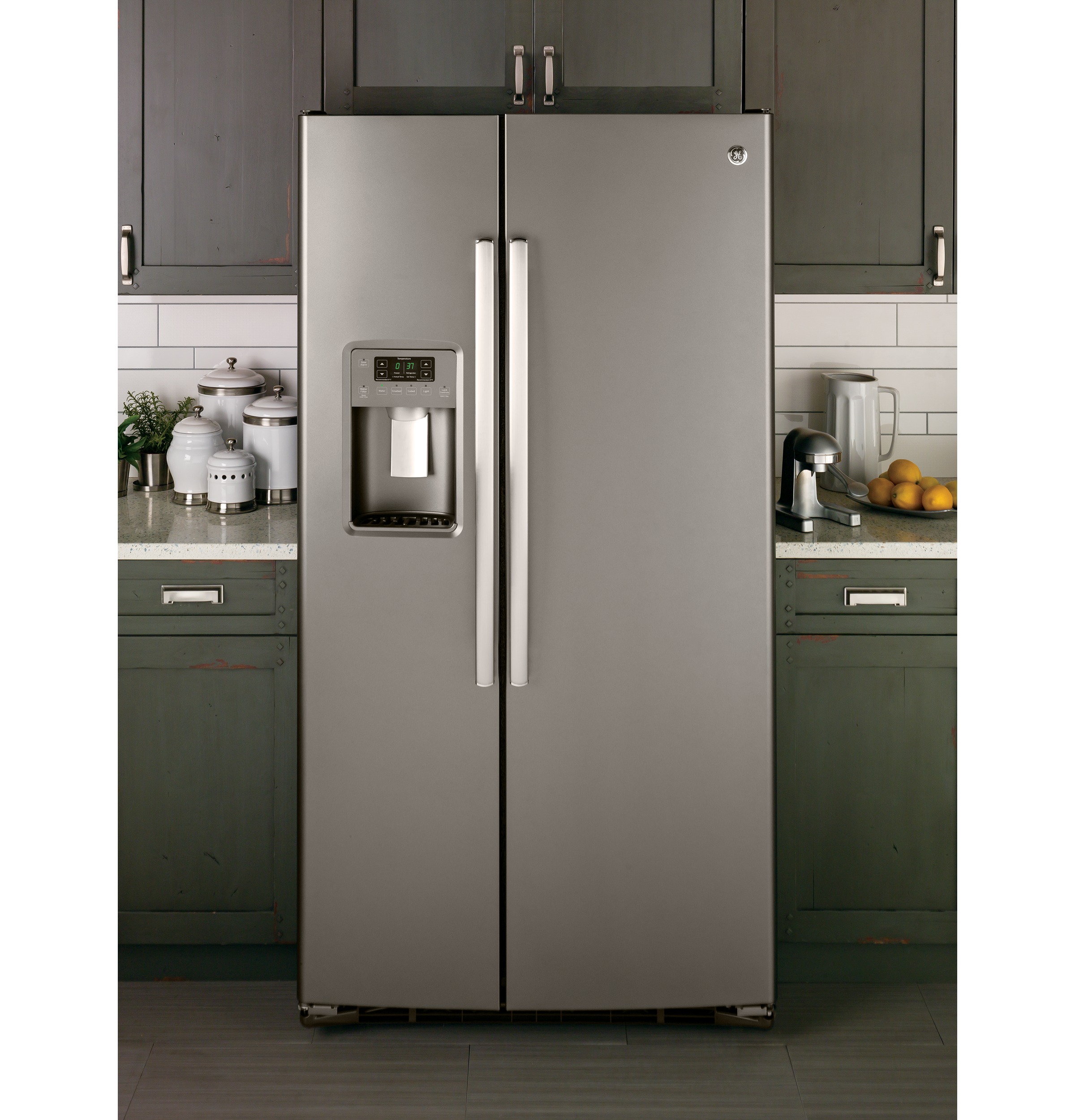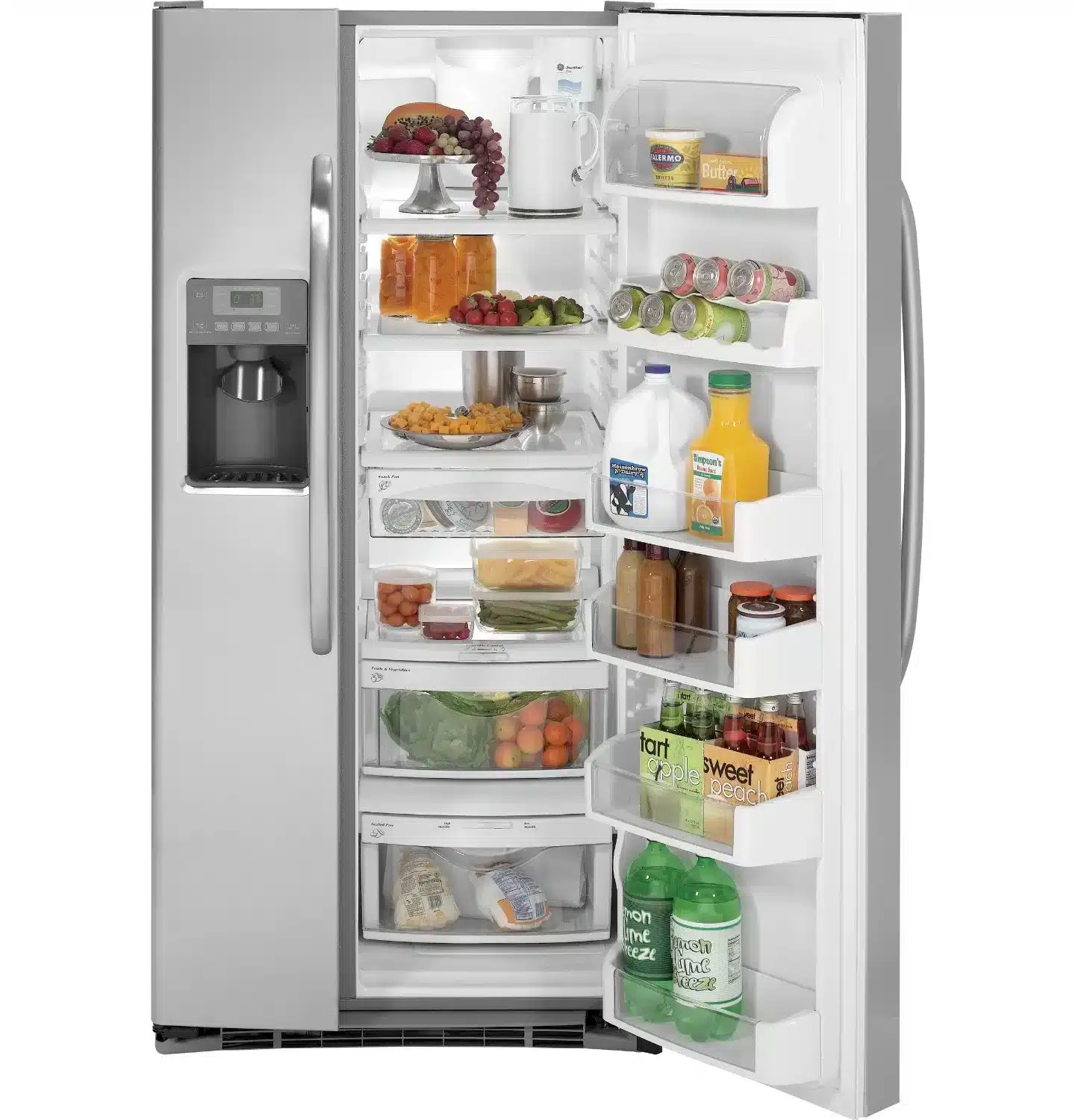There are several reasons why your GE fridge may not be making ice. Some of the common causes are ice maker switch being turned off, freezer temperature being too high, ice maker being jammed or frozen, water filter being clogged or improperly installed, water supply line being kinked or blocked, or ice maker module being defective.
How to Troubleshoot and Fix a GE Fridge Not Making Ice
To troubleshoot and fix a GE fridge not making ice, you need to check the following parts and components of your fridge and see if they are working correctly. You may need to clean, adjust, replace, or repair them as needed. Here are the steps to follow:
- Check the ice maker switch: Make sure your ice maker switch is turned on. The ice maker switch is usually located on the control panel or inside the freezer compartment of your fridge. It may have a symbol that looks like an ice cube or a letter I. If the switch is off, turn it on and wait for the ice maker to cycle.
- Check the freezer temperature: Make sure your freezer temperature is set correctly. The freezer temperature should be around 0°F for optimal ice production. If the freezer temperature is too high, it may prevent the ice maker from reaching the required temperature to make ice. You can adjust the freezer temperature using the control panel on your fridge. Wait 24 hours for the temperature to stabilize after making an adjustment.
- Check the ice maker: Make sure your ice maker is not jammed or frozen. The ice maker is usually located in the upper left corner of the freezer compartment of your fridge. It may have a metal arm or a sensor that detects the level of ice in the bin. If there are any ice cubes that are stuck or blocking the ice maker, remove them carefully. Use caution: the ice maker mold may be hot. If there is any frost or ice buildup on the ice maker, defrost it using a hair dryer or a warm cloth.
- Check the water filter: Make sure your water filter is not clogged or improperly installed. The water filter is usually located in the upper right corner of the fresh food compartment of your fridge. It may have a symbol that looks like a water droplet or a letter F. If the water filter is clogged, it may restrict the water flow to the ice maker and affect its performance. You should replace your water filter every 6 months or sooner if you notice a decrease in water quality or pressure. To replace your water filter, follow the instructions in your user manual or watch this video . If the water filter is improperly installed, it may cause air bubbles or leaks in the system. To install your water filter correctly, follow the instructions in your user manual or watch this video .
- Check the water supply line: Make sure your water supply line is not kinked or blocked. The water supply line is usually located at the back of your fridge. It connects your fridge to your home’s water source via a valve. If the water supply line is kinked, it may prevent the water from reaching the ice maker and cause it to malfunction. To straighten out any kinks, gently pull or bend the line until it is smooth and straight. If the water supply line is blocked, it may be due to sediment buildup or frozen water in the line. To clear any blockages, turn off the water supply valve and disconnect the line from both ends. Use a turkey baster or a syringe to flush out any debris or ice from the line with warm water.
- Check the ice maker module: Make sure your ice maker module is not defective. The ice maker module is located inside the ice maker assembly. It controls the motor, heater, and water inlet valve of the ice maker. If it is defective, it may fail to initiate or complete an ice cycle and cause your fridge to not make ice. To check it, use a multimeter to test its resistance or continuity. If it shows no resistance or continuity, you may need to replace it or call a technician for service.

FAQs About GE Fridge Not Making Ice
Here are some frequently asked questions about GE fridge not making ice:
- How do I reset my GE fridge ice maker? To reset your GE fridge ice maker, you need to power cycle it. This means turning it off and on again at the control panel or by unplugging and plugging back in your fridge. This can help you clear any error codes, restore the default settings, or bring your ice maker out of showroom mode.
- How long does it take for a GE fridge ice maker to make ice? It may take up to 24 hours for a GE fridge ice maker to make ice after initial start-up or after making an adjustment to the temperature or water settings. You should avoid opening the freezer door frequently during this time to allow the ice maker to cycle properly.
- How do I find out the model number of my GE fridge? You can find out the model number of your GE fridge by looking at its serial plate. The serial plate is usually located inside the fresh food compartment on the right or left wall near the top.
Conclusion
GE fridges are smart appliances that offer great cooling, storage, and design. However, they may also experience some problems where they are not making ice. This can be caused by various factors, such as ice maker switch being turned off, freezer temperature being too high, ice maker being jammed or frozen, water filter being clogged or improperly installed, water supply line being kinked or blocked, or ice maker module being defective. To troubleshoot and fix a GE fridge not making ice, you need to check these parts and components and see if they are working correctly. You may need to clean, adjust, replace, or repair them as needed.


